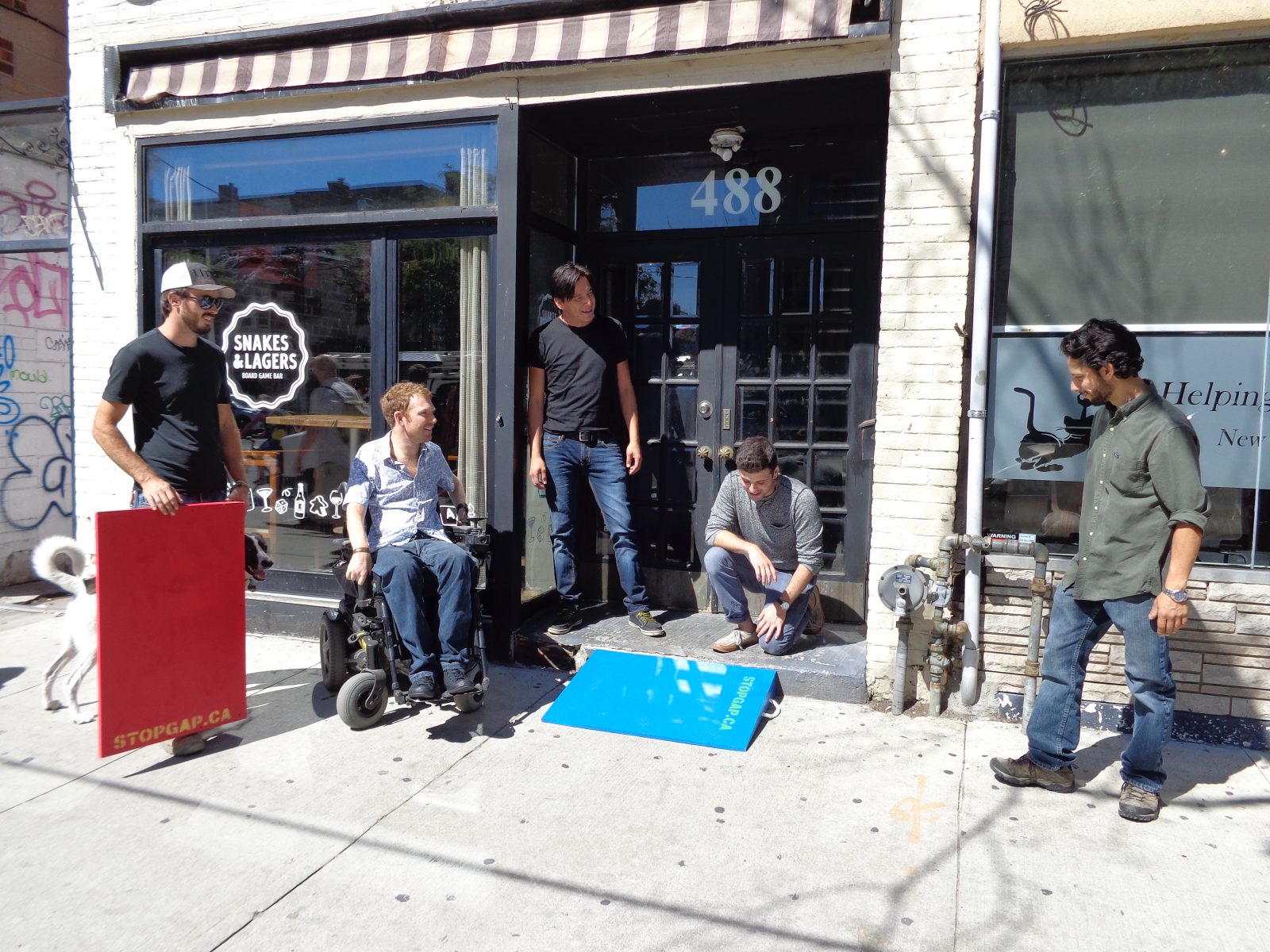Architecture
The design of a building, the shape of rooms, the size of doorways and width of hallways can all make it difficult for people using wheelchairs, parents pushing strollers, or delivery people using carts to enter and use a space. Careful planning during the design process is important, but it’s also easy to make a building more inclusive with some simple and inexpensive modifications. For example, the StopGap Foundation creates custom deployable ramps to make buildings with single-step entrances more accessible for everyone. Through funding from organizations like the Toyota Canada Foundation, they provide ramps to small businesses with tight budgets to help create barrier-free communities across the country. This one small change can have a huge impact for everybody, regardless of ability.
Attitudes
Some of the biggest challenges many people living with disabilities face are the social and cultural attitudes that reinforce stereotypes and biases. This type of barrier happens when each and every human’s unique lived experience isn’t honoured, loved, and regarded as equally valuable. It can also happen when there is a stigma around a condition that makes it harder for people to open up about it and seek support. For example, people with anxiety or depression may feel embarrassed or ashamed to ask for help at work or school for fear that they will be treated differently. By learning more about invisible health conditions, you can help educate others in your community and be more supportive next time someone comes forward to ask for assistance.
Communication
Whether it’s a brochure in a place of worship, a sign for a local landmark or a signup sheet at the community centre, people living with various degrees of blindness can have trouble reading a variety of printed materials. Similarly, websites need to be accessible for everyone. Paying attention to this will become even more important as our population continues to age and experience age-related vision loss like presbyopia. Fortunately, several organizations have created guidelines for people creating web or printed content. If you’re working on a flyer, book or website for a business or organization in your community, look into these current best practices and do your best to follow them.



